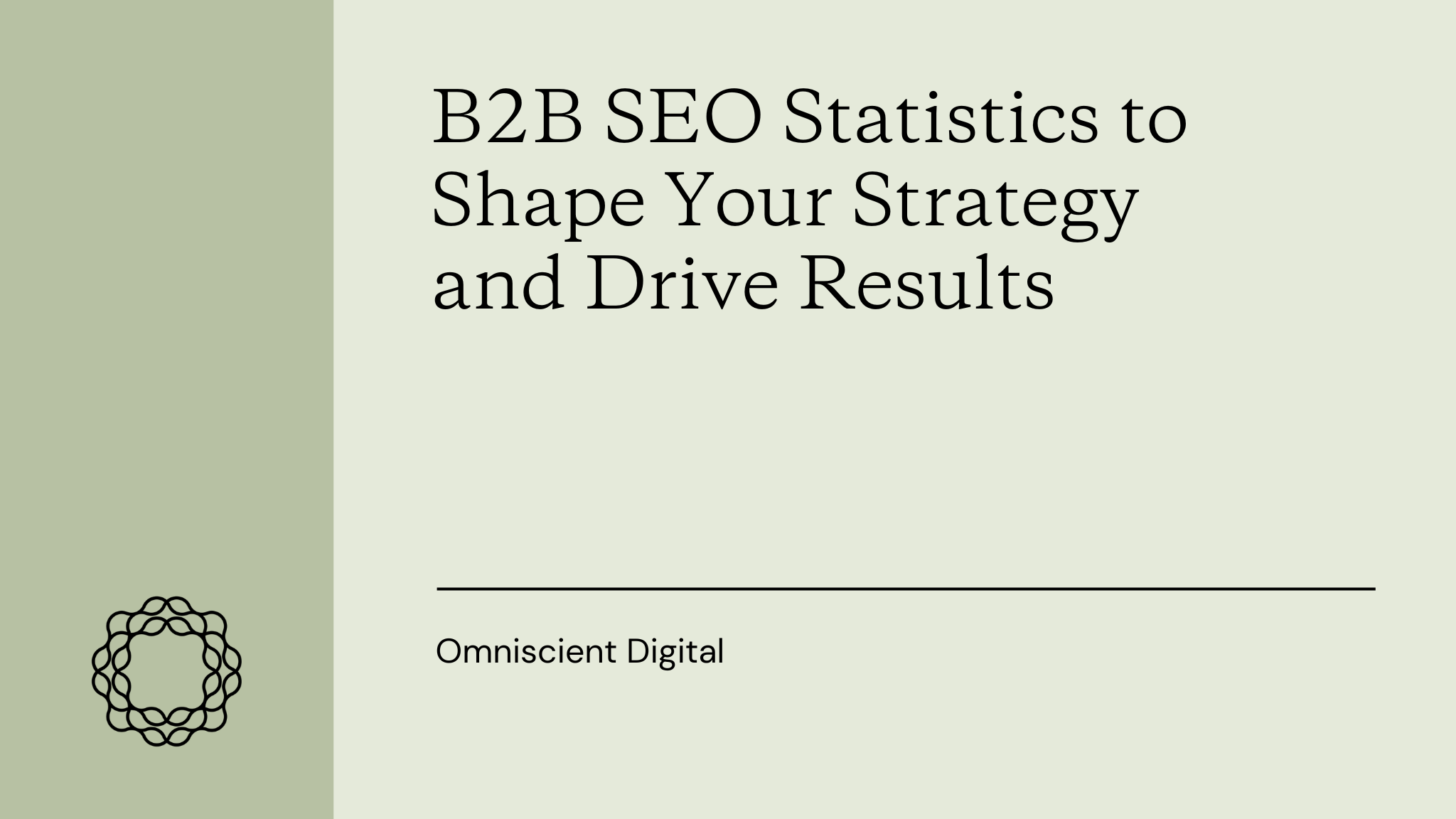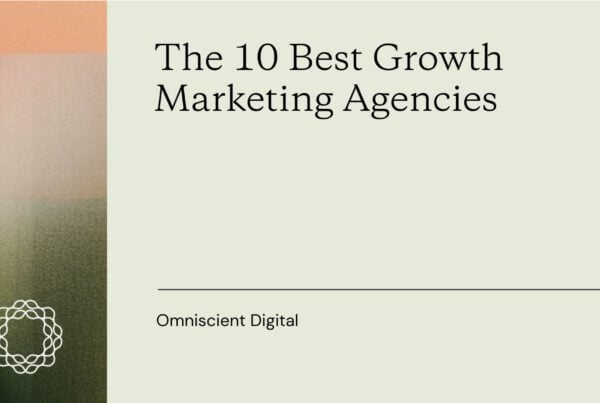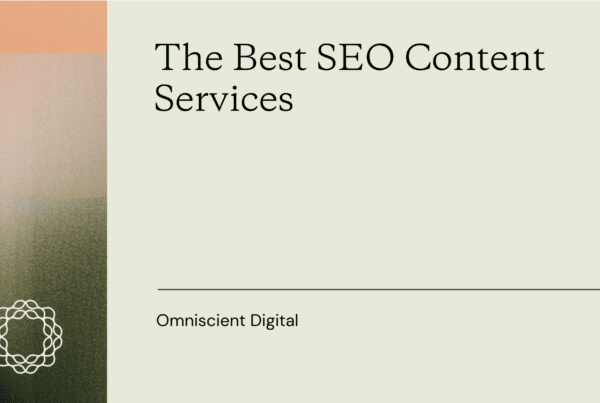
SEO in 2026 isn’t about chasing every new shiny thing. It’s about balancing the fundamentals with the shifts in AI, search, and user behavior. These B2B SEO statistics give you the lay of the land — where search engines still dominate, where content marketing shines, and where your SEO strategy could improve.
Think of this as your playbook: the facts you can bring into a strategy meeting tomorrow, backed by the most relevant statistics in the SEO industry.
Traditional SEO’s Continued Relevance
Even with AI taking up more SERP space, search engines aren’t going anywhere. The numbers say it all:
- Google owns 84.9% of the global search engine market.
- Search engines account for 76% of all website traffic to B2B sites.
- Internet users searched on Google 379 times more than ChatGPT.
- 99% of those using generative AI tools continued to use search engines.
- 30% of B2B marketers say SEO is the most effective part of their marketing efforts.
The takeaway? You should still hinge on meeting your target audience in search. SEO efforts remain the anchor of any successful marketing strategy.
Organic Search
Organic search continues to be the foundation of B2B marketing performance:
- Organic search generates 53% of inbound leads for B2B marketers.
- Organic listings in Google search results receive 8.5 times more clicks than paid ads.
- SEO contributes 44.6% of B2B revenue, more than twice as much revenue as any other channel.
- SEO efforts drive over 1000% more web traffic than social media ads for B2B websites.
- 90% of online B2B content receives no organic traffic.
Organic search is still the foundation of lead generation and long-term ROI. Effective SEO strategies and content marketing efforts consistently bring high-quality leads, outperforming paid ads and social media channels.
B2B Buyer Behavior
Today’s B2B buyers have their own pace, and they start with online research:
- 6–10 stakeholders are typically involved in B2B purchases.
- 71% of B2B buyers begin their journey with a Google search.
- 83% prefer conducting online research through search engines and vendor sites before contacting sales.
- On average, B2B buyers conduct 12 searches before visiting the seller’s website.
- B2B buyers are moving faster — online research now makes up just 31% of the buyer journey, down from 43%.
The bar? High-quality content that answers questions for your target audience over anything that feels sales-driven.
Lead Generation & SEO ROI Statistics
The SEO industry delivers consistently strong returns:
- SEO delivers an average ROI of 825% in 3 years.
- B2B SaaS businesses experience an average ROI of 702% from search engine optimization and 7 months to break even.
- SEO leads convert at 14.6%, while outbound leads convert at just 1.7%.
- 70% of marketers say SEO outperforms PPC in generating sales.
- Companies seen as authoritative through SEO efforts close deals with 89% larger average value.
A solid content marketing strategy isn’t just about reach — it’s about lead generation and organic online traffic that compound over time. These are the kind of SEO marketing statistics that guide smarter resource allocation and long-term planning.
AI’s SERP Disruption
Generative AI is reshaping search engine results pages:
- Generative AI results now influence 84% of Google search queries.
- 46.5% of AI Overview citations link to pages ranked outside the top 50.
- Only 4.5% of URLs shown in AI results appear on page one of Google search results.
- Featured snippets show up in 12.29% of search queries on SERPs.
- 97.7% of search engine results pages include some SERP feature.
SEO statistics show you still need search engine rankings, but your SEO strategy should factor in visibility beyond them. This could mean planning each SEO campaign with AI features in mind.
AI Overviews & Zero-Click Search
Clicks are getting harder to earn:
- Google AI Overviews expanded from 10K to 172K keywords from August 2024 to May 2025.
- AI Overviews lower desktop CTRs by 7.4% and mobile CTR by 19%.
- 80% of users rely on zero-click search results for 40% or more of their queries.
- One-third of searchers who left Google’s AI overview went to Reddit, YouTube, or forums for “social proof.”
- 60% of Google searches in the US ended in zero clicks in 2025.
Winning here means baking zero-click thinking into your SEO marketing strategies — still tied to organic search, but smarter.
Authority & Backlinks
Link equity still matters:
- Pages ranked #1 have 3.8 times more backlinks than those in positions 2–10.
- Original research reports see, on average, a 42.2% increase in the number of backlinks they earn.
- Long-form content earns 77.2% more backlinks on average than short articles.
- Over 90% of B2B content pieces have no external backlinks at all.
- 53% of marketers consider guest posting on other sites the most effective link-building method.
Backlinks feed lead generation, organic search strength, and authority signals that Google trusts. Unlike algorithm-sensitive tactics, a strong backlink profile compounds over time, driving sustained visibility and credibility in your space.
Click-Through Rates & Conversions
Click behavior is shifting:
- Just 0.78% of internet users engage with websites on page two of Google search results, and over 67% of all clicks go to the top 5 positions on search engine results pages.
- After the AI Overview rollout, CTRs for Position #1 dropped 32%, and Position #2 experienced a 39% drop.
- B2B websites are experiencing improved rankings while click-through rates declined from 2% to 0.2%.
- The overall average conversion rate for SEO is 2.4%, and 2.1% for B2B SaaS companies specifically.
- Leads generated through SEO convert to customers at a rate of around 15%, far surpassing the ~2% close rate from traditional outbound strategies like cold-calling.
Another reason to track SEO statistics that tie back to website traffic and conversions, not just rankings. Monitoring how rankings translate into clicks, and clicks into leads, helps you spot when to adjust messaging, targeting, or conversion flows.
Keyword Research & SEO Trends
Keyword research is evolving toward intent-rich, long-tail opportunities:
- Over 92% of all keywords get fewer than 10 searches per month.
- 71% of marketers report that strategically using specific keywords is their #1 tactic for SEO success.
- Only 5.4% of AI Overview answers match the exact query — SEO now requires understanding intent over keyword match.
- The average keyword length for 10% of top-ranking B2B websites is 3.2–3.5 words, and long-tail keywords generate 3–6% more click-throughs than short-tail keywords.
- Demand for fresh keyword ideas emerges because 15% of all Google queries are original — the exact phrasing has never been searched before.
Another proof point for focusing on relevant keywords inside every SEO strategy. But it’s not just about finding them — it’s about tracking shifts in how your audience searches, updating your content to meet that intent, and staying ahead of competitors who target the same terms.
Content Marketing Statistics
Content marketing efforts are still the growth engine:
- Google’s first-page content averages 1,447 words.
- Blogging 9 times per month yields 35.8% more Google traffic than publishing 1–4 posts.
- Publishing original research boosts organic traffic by nearly 30% YoY from 9.3% for B2B SaaS companies.
- Companies prioritizing blogs are 13 times more likely to report strong SEO ROI outcomes.
- Content marketing costs 62% less than outbound tactics, but generates 3 times more leads per dollar.
Consistent content creation, from blogs to video marketing, powers organic search growth and lead generation. Layering in data-driven updates and fresh perspectives keeps that content performing well over time, ensuring your investment continues to drive measurable results.
Technical SEO Statistics
Technical SEO statistics show speed and usability still matter:
- A 1-second faster mobile load time can improve mobile conversions by up to 20%.
- 70% of consumers say page speed impacts their willingness to buy from an online retailer.
- 36% of SEO professionals consider the title tag the most important on-page element for ranking.
- Of all underperforming websites, 91.4% suffer from technical SEO issues; the average improvement when the problems are fixed is 37%.
- 30% of browsing happens via voice.
Technical SEO statistics emphasize mobile optimization, site speed, and search engine-friendly site architecture. Optimizing for mobile devices and incorporating voice search optimization are critical to long-term search engine rankings.
SEO Team Challenges & Investment Trends
Even experienced marketing teams face hurdles:
- For 41% of SEO professionals, link building is the most challenging part of SEO.
- Content development remains the most pressing SEO issue for 40% of marketers.
- 84% of B2B marketers outsource content creation—more than any other content marketing activity.
- 43% of marketers report spending over $10,000 annually on link-building efforts.
- 49% of B2B marketers include SEO in their overall marketing strategies, making it the most-used tactic.
B2B marketing teams are still investing in SEO — and still figuring it out. They’re improving, outsourcing content creation, and refining SEO efforts to boost ROI and generate leads.
The B2B SEO statistics here tell a clear story: AI is reshaping search results, but the fundamentals — organic search, content marketing, and a focused SEO strategy — still drive lead generation.
The winners will be marketing teams that keep their target audience at the center, optimize for mobile devices, and grow organic online traffic steadily.
In 2025, it’s not about chasing every new tactic. It’s about building a system that compounds, grounded in data, driven by creativity, and executed with precision.


